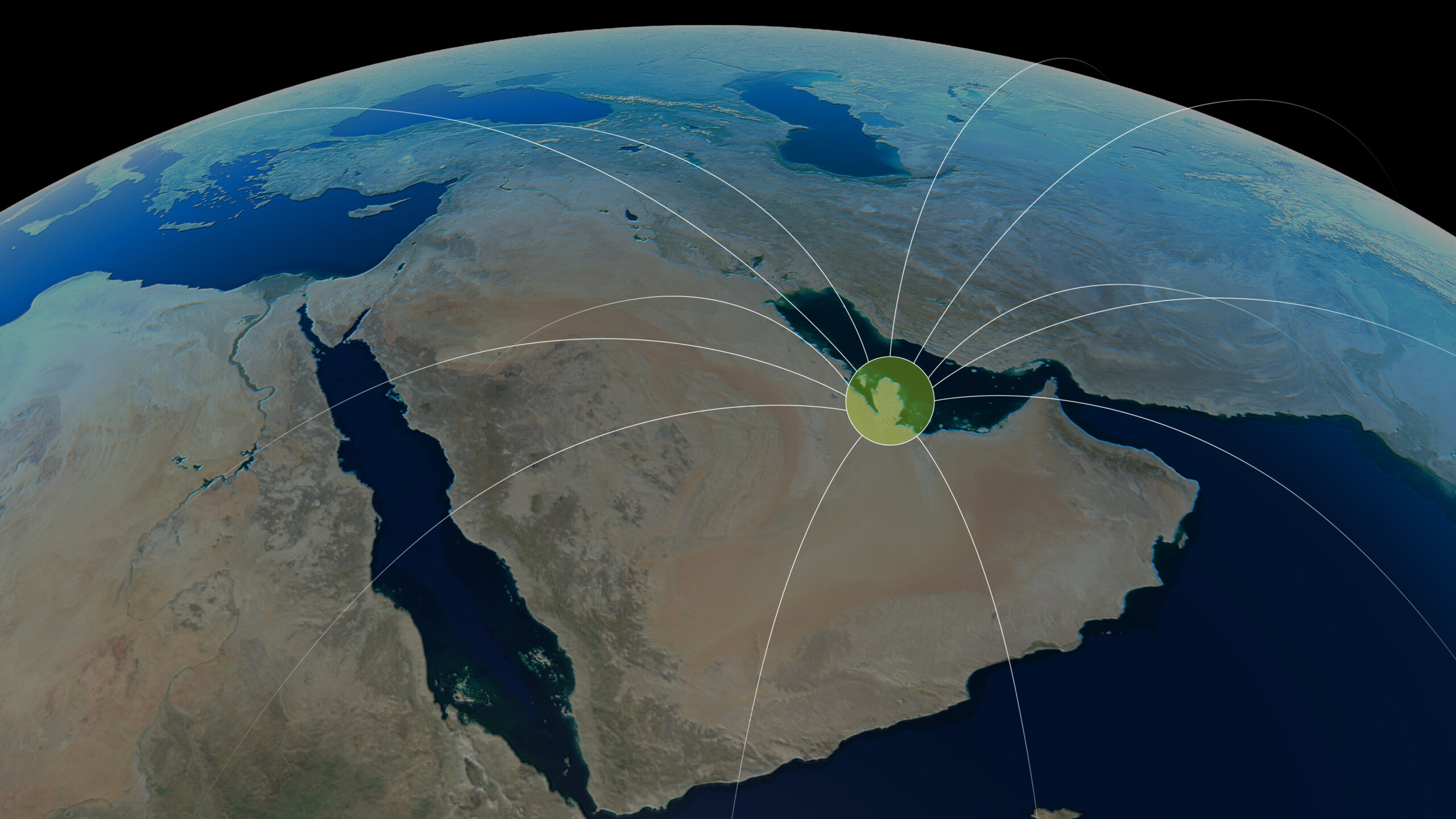The World’s First Center for Unified Biosecurity Excellence will be Built in Qatar
February 27 2024

Today Ginkgo and our partners Qatar Free Zones Authority (QFZ) and Doha Venture Capital (DVC) announced plans to build a Center for Unified Biosecurity Excellence-Doha, or CUBE-D, a soon-to-be-built large scale pathogen detection center in Doha, Qatar, that will be the center of the world’s premier network for pathogen monitoring and biological threat detection and risk analysis.
CUBE-D represents the next generation of biosecurity infrastructure. By leveraging lessons from COVID-19, Ginkgo is building a global bioradar system to detect a wide range of known and unknown biothreats. As a central connectivity hub with over two-thirds of the world’s population within an eight-hour flight, Qatar is ideally positioned to anchor these bioradar efforts.
Ginkgo, with its country partners, is building bioradar nodes around the world. These nodes can be airports, hospitals, municipalities, border facilities – anywhere we are collecting samples and detecting pathogens.
These nodes are then connected to each other through regional hubs – Centers for Unified Biosecurity Excellence – of which CUBE-D is the first! These hubs will be centers for genomic sequencing and bioinformatics analysis of data collected across the regional nodes.
“As inaugural members of Ginkgo’s global pathogen monitoring network, we are extremely supportive of expanded regional investment in high-end monitoring solutions,” said Rwanda’s Minister of State for Health, Yvan Butera, in a press release. “[We are] excited to have the opportunity to continue growing our biosecurity capabilities by leveraging partnership with the new Ginkgo CUBE facility in Doha.”
In the future, environmental and other anonymous, non-clinical samples will be regularly scanned for signals of emerging outbreaks, offering insight into how pathogens travel and evolve and building detection capabilities for natural, accidental, or intentional biothreats.
Advanced sequencing and bioinformatics tools will be able to pinpoint the genetic signatures of pathogens and provide early warning for global health and national security leaders in as close to real-time as possible.
Coupled with Ginkgo’s leading epidemiology and risk analytics platforms, this type of “biointelligence” or BIOINT will feed into predictive models to facilitate rapid response, such as developing medical countermeasures and deploying interventions, before a biological threat impacts lives and economies.

How will the biosecurity network of the future actually work?
Collection: At locations around the world, data from bioradar nodes in Ginkgo’s global network come in daily, collected from samples of voluntary nasal swabs of passengers, wastewater taken from international flights at dozens of major airports, from farms where there is high risk of zoonotic spillover, from border crossings where mass migration events are underway, or from low-resource crisis areas such as war zones.
Detection: The samples are tested and sequenced at local partner facilities that are part of Ginkgo’s lab enablement and capacity building programs. The data is analyzed by bioinformatics experts using software powered by artificial intelligence to detect the movement and evolution of the world’s most threatening infectious diseases—and to catch novel biological threats, both natural and engineered, as they appear. Via scaled sequencing, the system turns the environment (pathogens, threats) into a data problem on a scale never seen before.
Analysis: CUBE-D is a first-of-its-kind bioradar network hub that will serve as the foundation of a new era of biological intelligence, underpinning a suite of biosecurity tools and infrastructure such as epidemiological and risk analysis, modeling to optimize collection node locations, and programs like ENDAR, a software that can detect the signatures of biological engineering.
Response: The intelligence gathered by the network can then be used by national security agencies, public health officials, and vaccine manufacturers to make informed decisions about response and medical countermeasures for whatever comes next. And within the next five to ten years, we believe it will be the way we detect and prevent the next pandemic.
